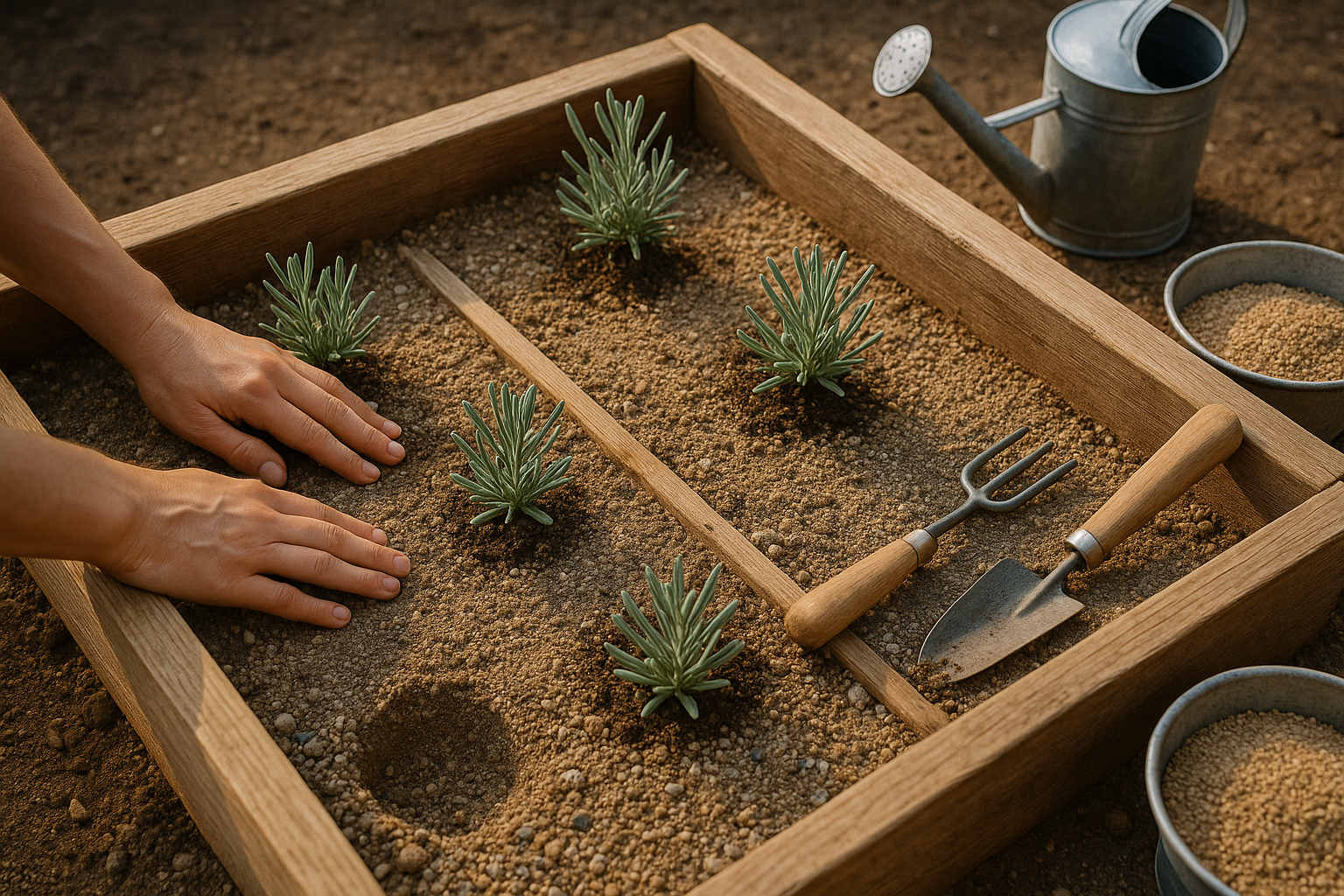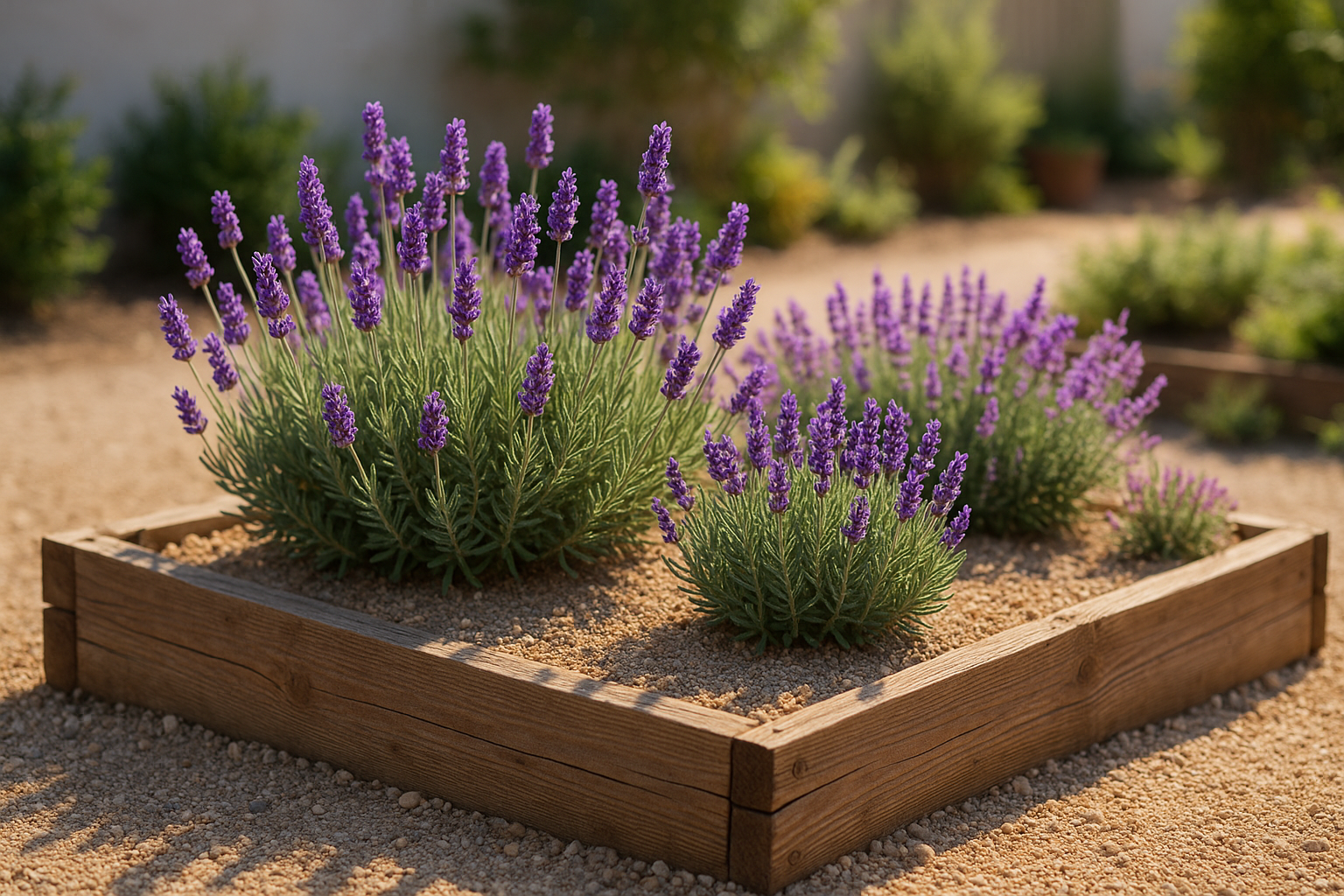Introduction
If you’re wondering whether you can grow lavender in raised beds, the answer is a resounding yes—lavender not only thrives in raised beds but often performs better than in traditional garden plots. Raised beds offer improved drainage, which is crucial for lavender’s well-being since the plant hates wet roots. This method is perfect for urban or small-space gardeners who may lack ideal in-ground soil or only have a patio to work with.
By lifting your lavender above ground level, you can better control soil quality, reduce weed competition, and keep your plants healthier overall. In this article, we’ll walk you through the key benefits of planting lavender in raised beds and give you step-by-step tips to ensure your plants prosper, from choosing the right soil mix to optimizing sunlight and watering routines. Whether you’re new to gardening or looking to upgrade your lavender patch, we’ll help you make the most of your raised beds.
Benefits of Growing Lavender in Raised Beds

Growing lavender in raised beds offers a variety of advantages that make it easier for gardeners to enjoy healthy, fragrant plants—even in less-than-perfect conditions. One of the biggest benefits is improved drainage; lavender hates soggy roots, and the extra height of a raised bed allows excess water to escape more freely, preventing root rot.
This setup also gives you total control over the soil mix, letting you create the loose, well-draining, slightly alkaline soil lavender thrives in, even if your yard’s soil is heavy clay or too acidic. Raised beds are gentler on lavender’s roots because you can avoid compacting the soil, which helps roots breathe, spread, and absorb nutrients more efficiently.
They also make it tougher for common pests like slugs and snails to reach the plants. Plus, because the space is more confined, you’ll find weeding and pruning faster and easier—no more kneeling in awkward positions for hours.
For gardeners dealing with tough climates, raised beds warm up sooner in spring and drain faster after heavy rains, extending the growing season. They also help protect plants from unexpected frosts by making it easy to cover the beds when needed.
In urban settings, raised beds are perfect for rooftops, patios, or small yards because they let you control soil quality and placement—even if you’re gardening on concrete.
With these advantages, growing lavender in raised beds is a smart solution that combines healthier plants with a more pleasant gardening experience, no matter where you live.
Choosing the Right Soil and Location
When planning your raised bed garden, selecting the right soil and location is essential for healthy, productive plants. Aim for soil that drains well but still retains some moisture. Sandy or loamy soil is ideal, allowing roots to grow easily and preventing waterlogging.
Soil with a slightly alkaline pH between 6.5 and 7.5 generally supports most vegetables and herbs. Consider using a simple soil testing kit to check the pH before planting.
Choose a spot for your raised bed that receives at least six to eight hours of direct sunlight daily. Most garden crops thrive in full sun, and a bright, open area helps prevent disease by drying leaves quickly after rain. Avoid low-lying areas where water tends to collect, as these can drown roots and encourage rot.
When amending your raised bed soil, avoid adding heavy clay, which compacts easily and drains poorly, or overly acidic materials like pine needles and peat moss, which can alter the pH unfavorably. Instead, mix in compost, coarse sand, or high-quality garden soil to improve both texture and fertility.
Before your first planting, thoroughly dig in any amendments to ensure uniform soil quality throughout the bed. These steps will set your plants up for success, providing the structure, nutrients, and light they need to thrive in your raised garden bed.
Planting Lavender in Raised Beds

Planting lavender in raised beds provides these fragrant, sun-loving plants with the perfect spot to thrive, but timing and preparation are key for success. Aim to plant seedlings or young transplants in spring after the last frost, when the soil has warmed up and the risk of freezing has passed.
Start by choosing a raised bed in a spot that receives at least six hours of sun each day. Fill it with a gritty, well-draining soil mix—combine garden soil with sand or perlite to mimic lavender’s native Mediterranean conditions.
When spacing your plants, leave about 18-24 inches between each seedling to allow for airflow and prevent disease. Crowding is a common mistake that encourages mildew.
Gently remove each lavender plant from its container, being careful not to disturb the roots, and plant it so the top of the root ball is level with the soil surface. Press the soil around the base without packing it too tightly; good drainage is critical because lavender hates wet feet.
Water thoroughly right after planting to soak the roots and help them settle in, but avoid overwatering in the weeks that follow—let the soil dry out between waterings.
A layer of light-colored mulch like gravel can help keep weeds down and reflect heat onto the plants, but avoid organic mulches that retain moisture.
Remember, lavender dislikes heavy clay soil, excess fertilizer, and too much water. Stick to simple care, and your raised bed will soon be filled with healthy, aromatic lavender blooms.
Ongoing Care and Maintenance
Lavender thrives best when its unique care needs are met, especially when it comes to watering. Instead of frequent shallow watering, give your lavender a deep soak every one to two weeks, allowing the soil to dry out in between. Overwatering is a common mistake—watch for signs of drought stress like wilting, dull foliage, or a faded fragrance. However, lavender is drought-tolerant once established, so underwatering is rarely an issue.
Pruning plays a crucial role in keeping your plants healthy and productive. Trim back about one third of the new growth in early spring to encourage dense, bushy growth and prevent woody stems from developing. After flowering, a light trim tidies up the plant and prepares it for the next season.
Fertilization needs are minimal—too much fertilizer can actually harm lavender by promoting leggy shoots and reducing essential oil production. A light application of balanced, slow-release fertilizer in the spring is sufficient.
When it comes to mulching, skip bark and compost. Instead, opt for gravel or small stones; these help reflect sunlight, deter fungal disease, and keep the soil well-drained, all of which lavender loves.
Stay vigilant for pests like aphids or spittlebugs. While lavender is generally disease- and pest-resistant, check the undersides of leaves regularly, and remove any visible pests by hand or with a burst of water.
With a little attention, your lavender will reward you with lush, fragrant blooms season after season.
Common Problems and How to Fix Them
Gardeners often face frustrating challenges such as root rot, fungal diseases, legginess, and poor blooming. Root rot is typically caused by overwatering or poor drainage; you can combat this by checking soil moisture and ensuring your beds drain well—something raised beds naturally help with.
Fungal diseases like powdery mildew spread quickly when plants are crowded or leaves stay wet for too long. To avoid this, space your plants out and water at the soil level instead of overhead, both easier to manage in raised beds.
Legginess, when plants grow tall and spindly, generally happens due to insufficient sunlight. Move your raised bed to a sunnier spot, or use reflective materials nearby to boost light levels.
Poor blooming often results from excessive nitrogen or lack of phosphorus—try a balanced fertilizer and be patient, as stressed plants may need time to recover.
One major benefit of gardening in raised beds is that you control the soil and drainage more easily, reducing the risk of many of these issues before they even start. Regular observation helps catch problems early, so check your plants often and adjust care as needed—a few quick fixes can keep your garden looking its best all season long.
Harvesting and Using Your Lavender
To get the most fragrance and longest-lasting blooms from your lavender, harvest it in the morning after the dew dries but before the midday sun gets too hot—this is when the essential oils are at their peak. Use clean, sharp shears to snip stems just above the leaves, gathering a small bunch in your hand at a time for ease.
Hang bundles upside down in a dry, dark place with good airflow; this preserves both color and scent. Once fully dried, your lavender can be used in so many creative ways.
Tuck sprigs into sachets for drawers or closets, or make simple wreaths and bouquets for your home décor. For culinary use, try sprinkling culinary-grade dried buds into shortbread cookies, lemonade, or roasted vegetables for a subtle floral note. If you love natural scents, fill a muslin bag with dried buds, toss it in your bath, or add some to homemade candles and potpourri for a calming aroma.
Lavender is truly versatile, so harvest your blooms with care and let your creativity run wild—whether you craft, cook, or simply savor the soothing scent, it’s a rewarding way to enjoy your garden year-round.
Conclusion
Growing lavender in raised beds offers plenty of advantages, from improved drainage and easier weed control to better soil conditions and less bending over for maintenance. You’ll find that the tidy setup helps your lavender thrive with less work, making it a perfect addition even for small gardens or patios.
If you’ve been hesitant, give it a try—lavender is hardy and forgiving, especially in a raised bed. As a final tip: start with a few healthy plants from a local nursery and keep the soil well-drained. With a little care, you’ll soon enjoy fragrant blooms and pollinators flocking to your garden!
